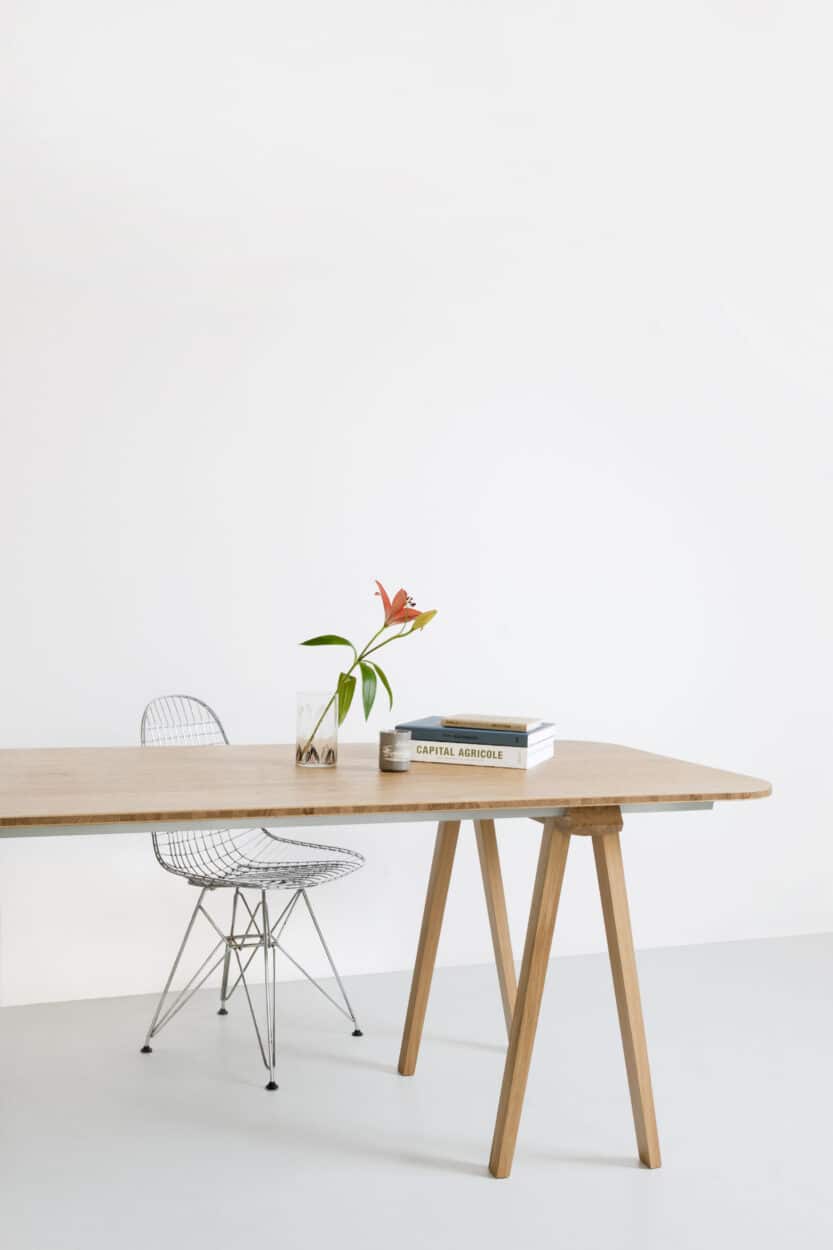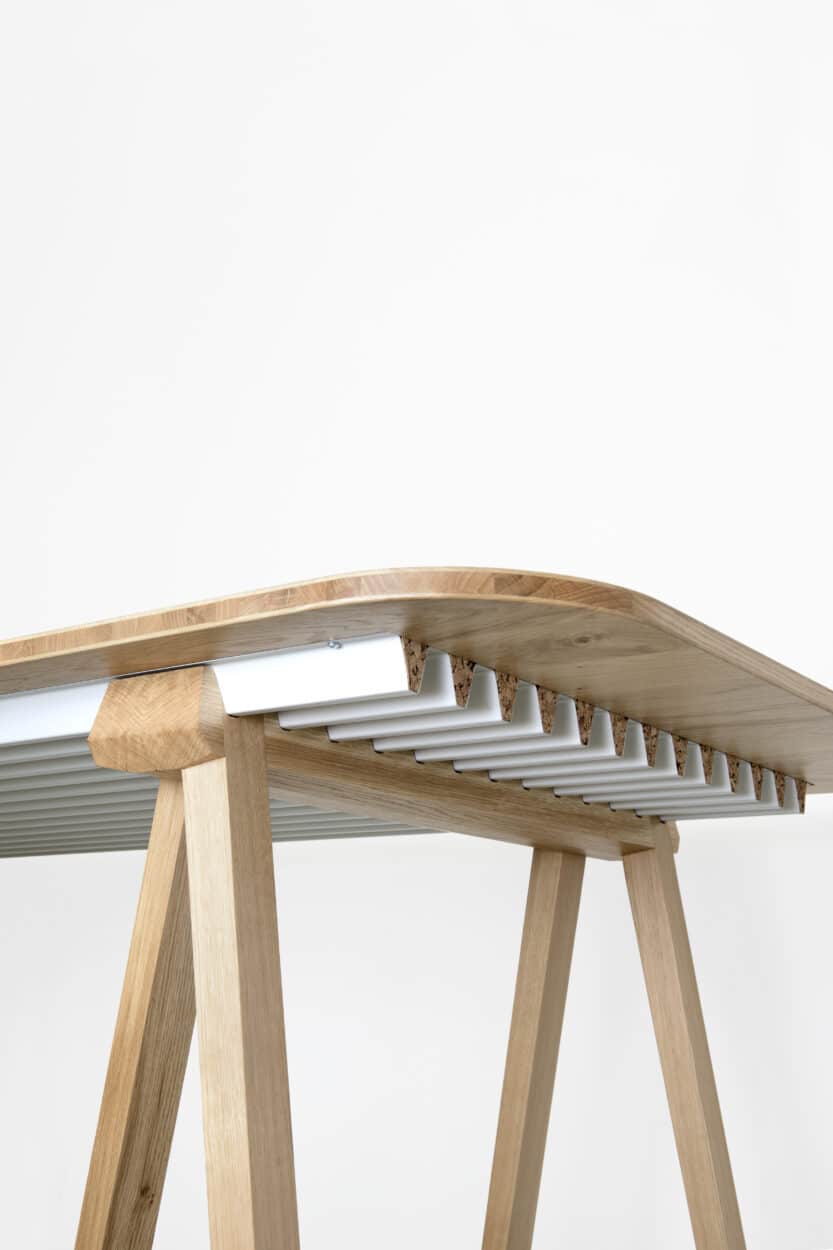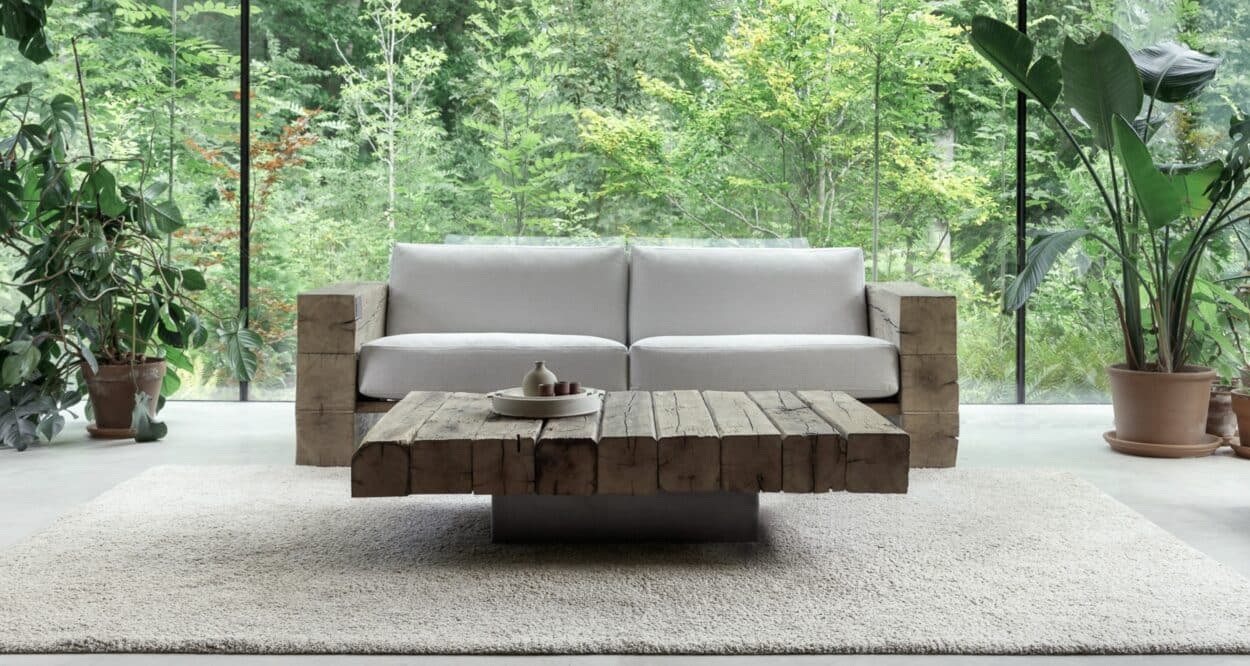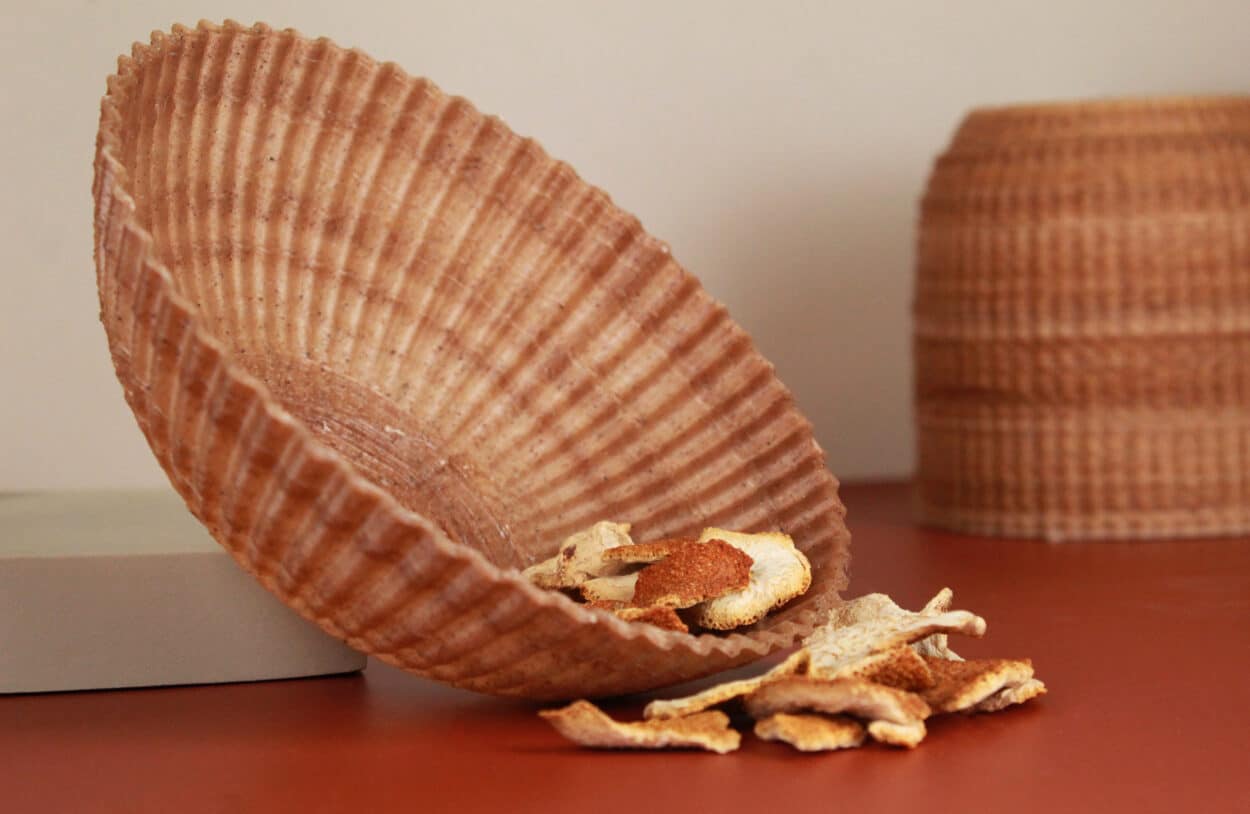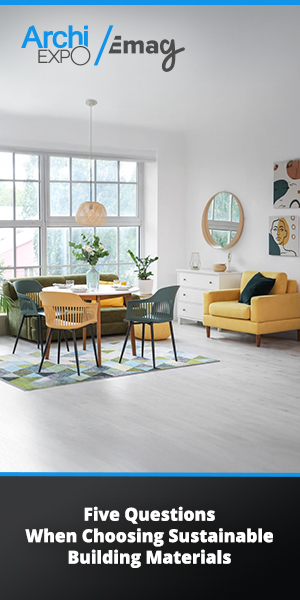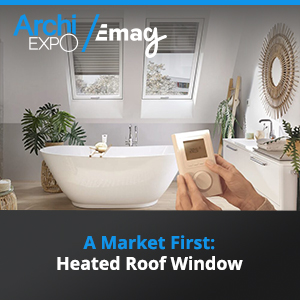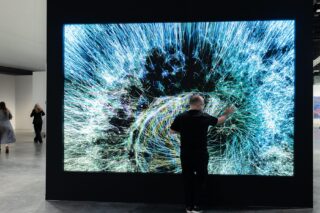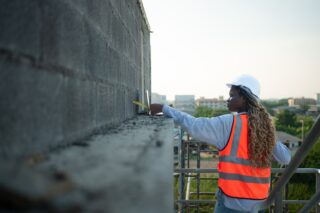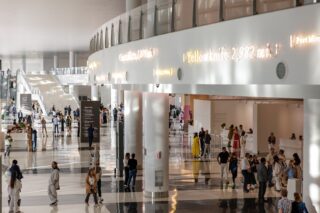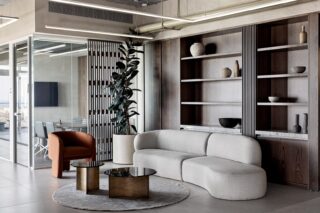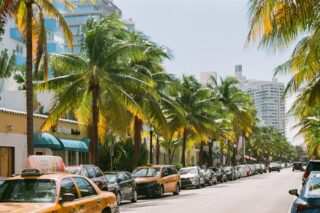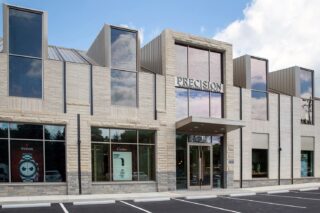The FRENCH DESIGN by VIA is running the exhibition Design x Durable x Désirable in Paris where a number of eco-designs are on display.
March 29 – July 13—An ongoing exhibition called Design x Durable x Désirable offers guests the opportunity to explore how manufacturers, editors and designers are orienting their work toward a more environmentally friendly activity. The FRENCH DESIGN by VIA has organized the exhibition in its gallery on 120, Avenue Ledru Rollin in Paris. Guests can circulate through a selection of French objects and projects in line with new, responsible materials, manufacturing processes and end-uses. The group has taken the five themes from its 2022 inspirational notebook to organize the display: new models, innovative processes, territory conquests, creative visions and future uses.
The Parisian architectural firm architecture firm Jakob + Macfarlane prepared the scenography, based on the archetype of an archipelago and composed of five islands that represent the five themes. Although each island, or theme, presents a unique shape and identity, they’re linked by a unifying trait. They present design approaches and techniques that highlight how we’re heading toward a collective quest for a healthier and more ecological relationship with planet Earth.
The Jakob+Macfarlane agency chose to create the elements of the scenography in Next® panels. Produced by the French company Panneaux de Corrèze, Next® is an MDF panel manufactured using a patented technology with a natural vegetable resin, based on rapeseed and sunflower cakes, developed by the company Evertree with the support of Ademe. This resin, which replaces the current fossil resins, contains no added formaldehyde or isocyanate, which formaldehyde or isocyanate, making it a more environmentally friendly environment with a 42% smaller carbon footprint and healthier for indoor air quality.

New Models: Flat Glass and Recycled Plastic and Foam
The New Models island represents the circular economy, mutualization and open source as well as a social and solidarity economy. Among the products and projects on display, visitors will find the Blandine lamp by Camif, made of 75% recycled windshield glass and broken windows, known as flat glass. The flat glass used is a mixture of window and windshield glass that is recovered and crushed before being processed into Wasterial®. The lamp is engraved, wired and packaged in France, in the Loiret. The product can be reused and recycled at the end of its life.
Guests can also analyze the Art 77.5 armchair designed by Charlotte Juillard for Noma Editions. It’s made of 77.5% recycled materials and has a curved recycled plastic shell, fixed on a recycled steel structure. It is upholstered with a recycled polyester fabric and 35% of the foam that composes it comes from recycled foam.
Innovative Processes: Lamps from Citrus Peels and Furniture from Grains
In this section, we can find innovative eco-materials, alternative techniques and new technologies. The Citrus Paradisi lamp and mug by Repulp Design are an example of the type of products visitors can view. This lamp and mug are made by printing a filament made of Repulp, a material developed by Repulp Design and obtained from a mix of waste from the citrus juice industry and renewable materials. Repulp is a bio-based material produced from citrus waste, which is part of a virtuous circle. The objects produced are robust and durable, and at the end of their life, they can be recycled or composted. It’s similar to what we saw at Ambiente this year.
Another example is the stool by Instead Mobilier, considered to be the first furniture made from grains from beer brewing. One stool represents the equivalent of 6 liters of brewed beer. Designed to simplify assembly, this stool can be assembled with a single key in less than 5 minutes.
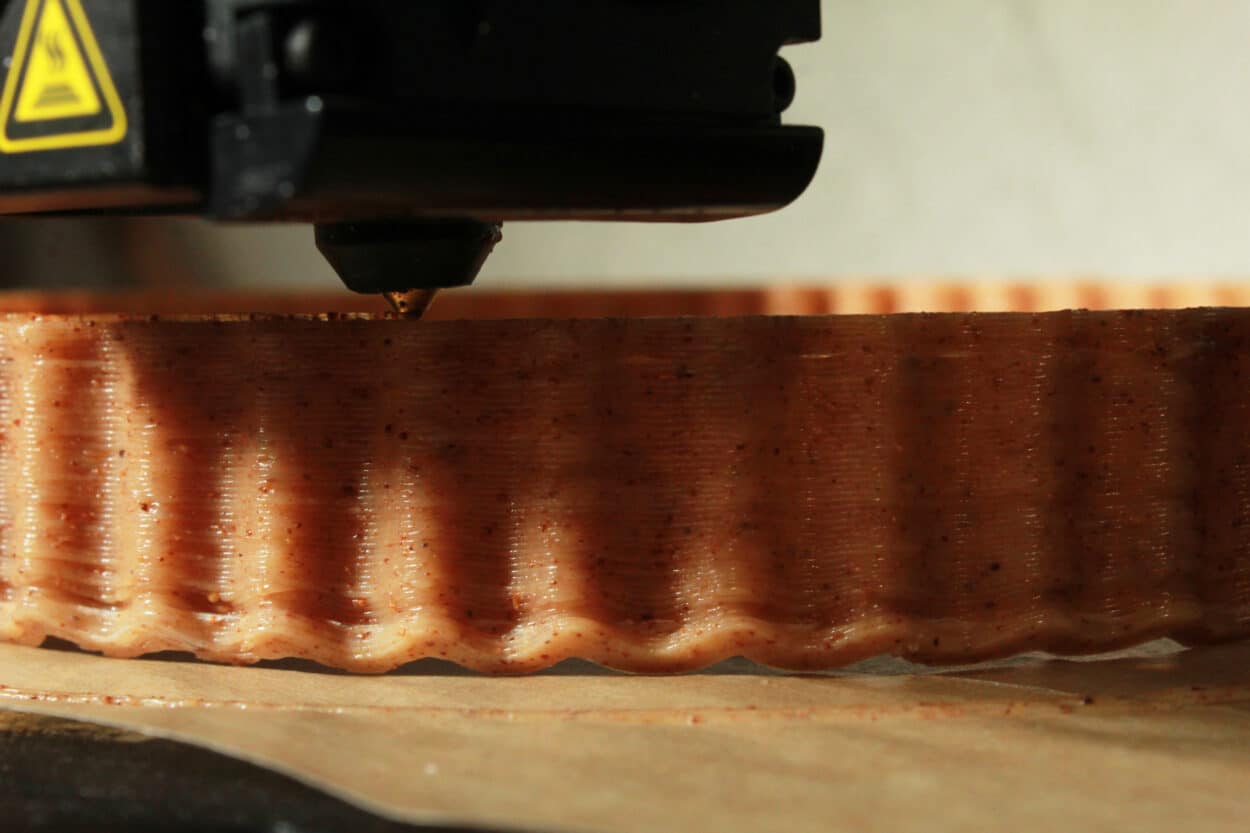
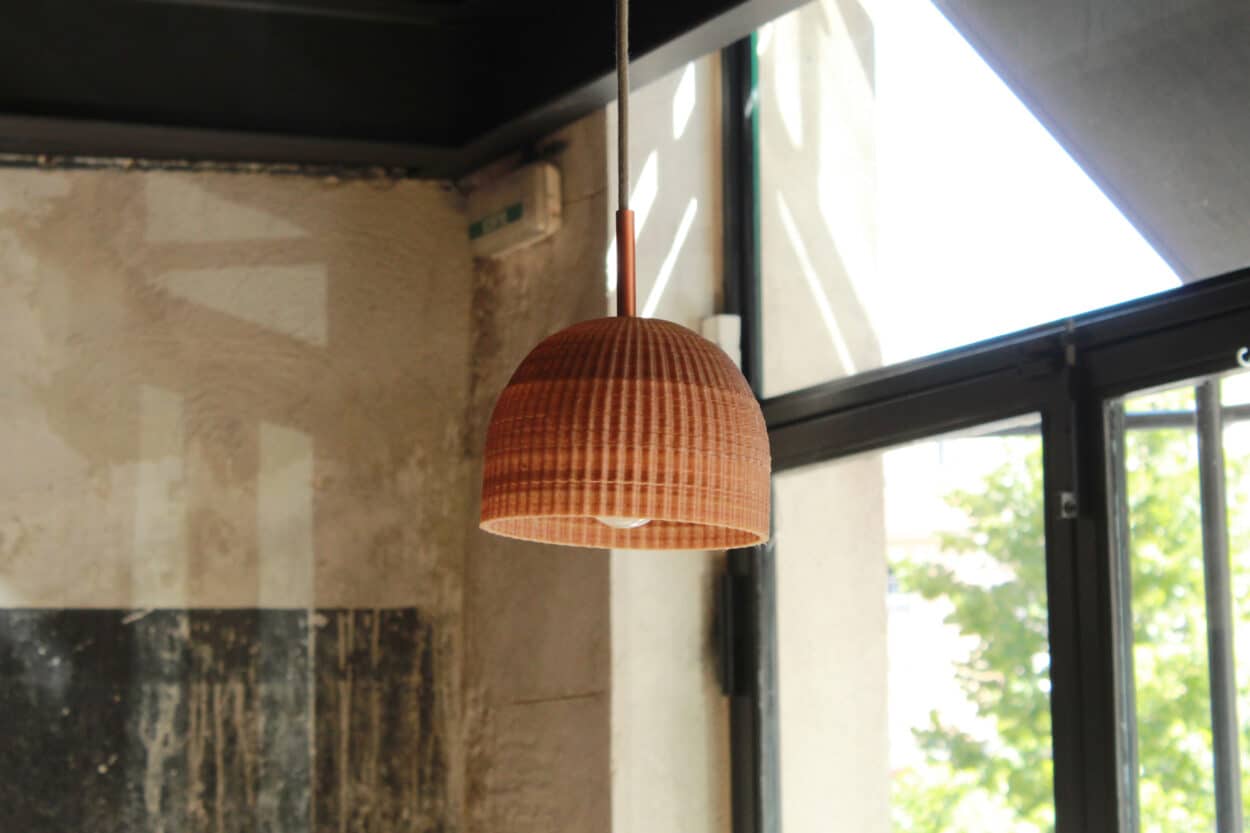
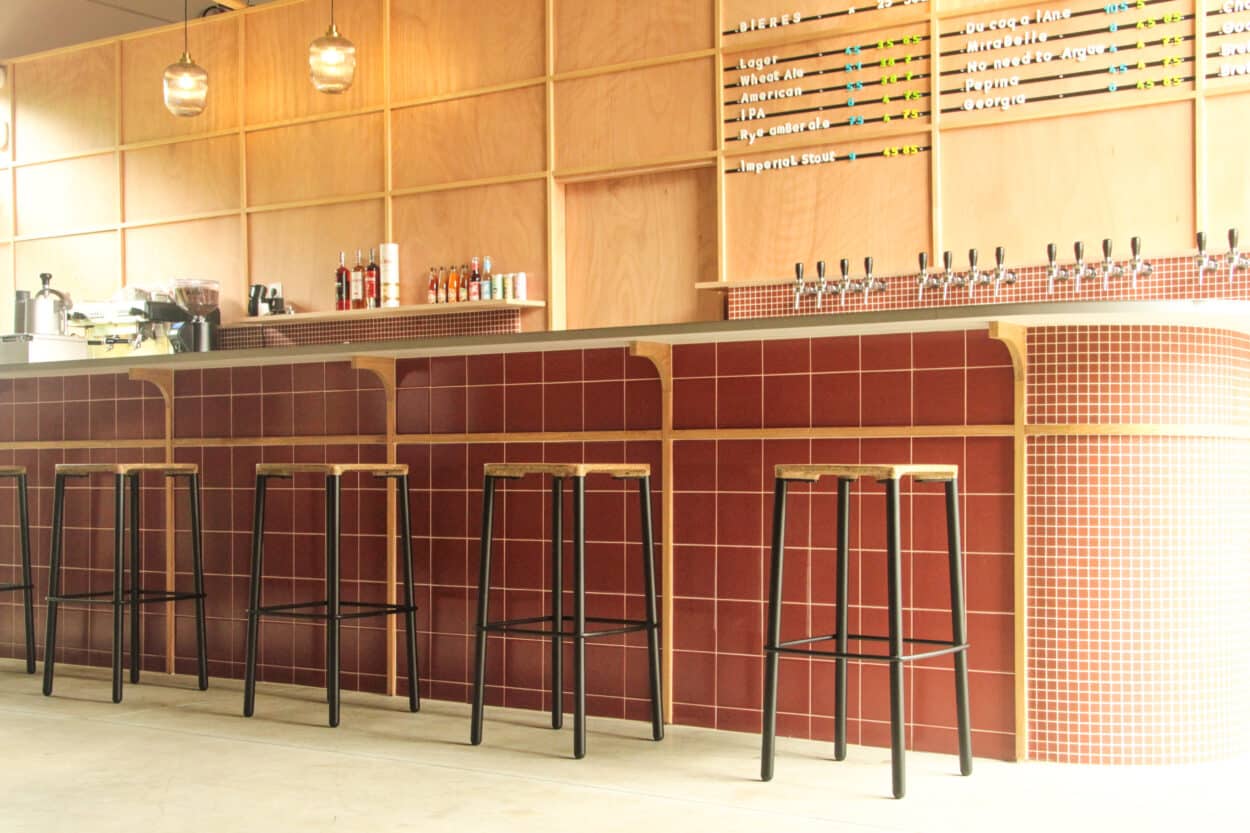
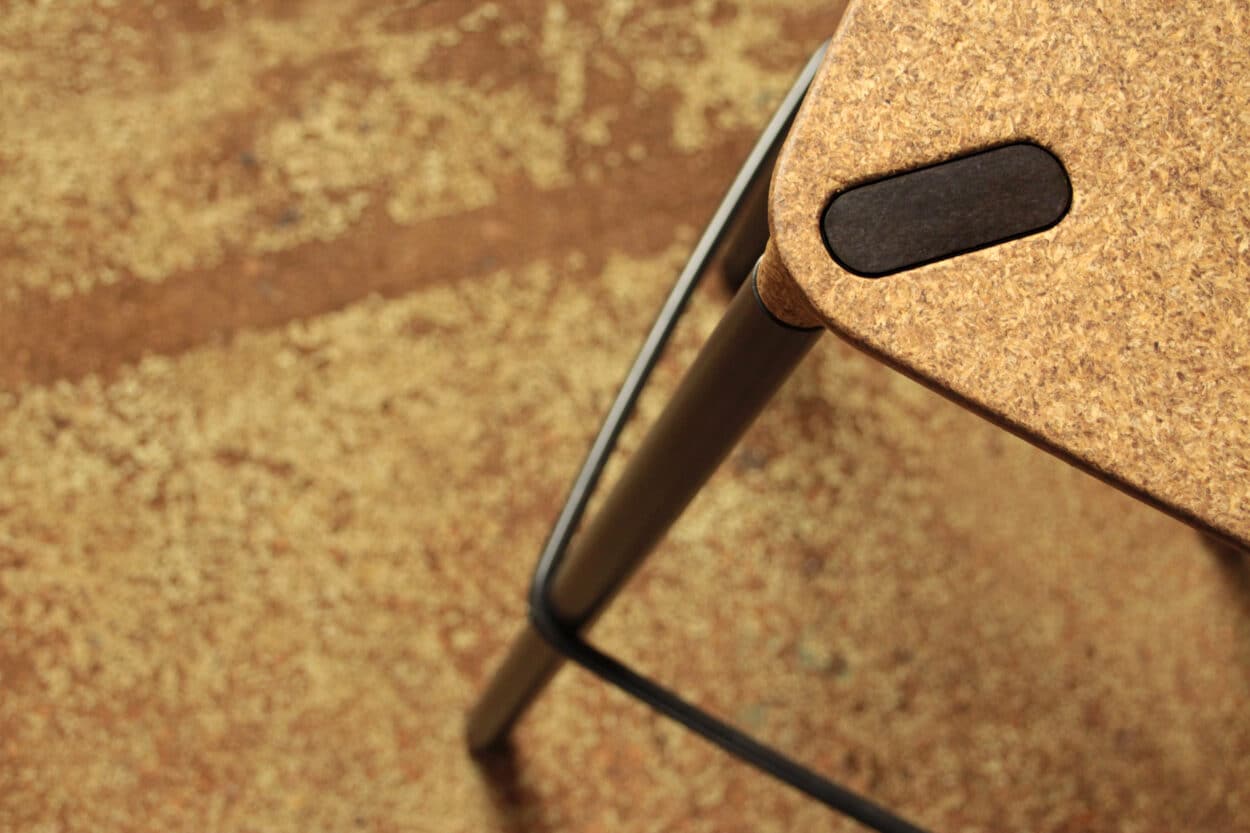
Territory Conquests: Industrial Reconquest and Inherited Traditions
This category highlights the industrial reconquest, short circuits and the know-how inherited from traditional methods. It also links contemporary to craftsmanship. The exhibits highlight the DNA of French companies that have repatriated their activities in France, revived know-how that was on the verge of extinction, maintained their local roots against all odds, or invented a new way of working in France. Another strong trend is the rapprochement of these ecosystems with art craftsmanship, inseparable from the land, which resurrects unique objects or small series, born of the intelligence of the hand. Here, visitors can discover the Rivoli Aero suspension designed by Saguez & Partners and manufactured by Lucibel and the elegant H10 dining chair designed by Margaux Keller for the company La Chaise Française.
The H10 dining chair marks the renewal of the specific know-how of chair making in France, thanks to the restarting of an old factory that date back to 1905. Manufactured in Aube, with beech wood from certified from French forests certified for their sustainable management (PEFC), it combines a creative design with the virtues of ‘Made in France’
The Rivoli Aéro light uses the innovative “CRONOS” technology, which reproduces the light path of the sun in a way that is synchronized with the human biological clock to increase alertness, performance and well-being of the users. It is manufactured in France by a company that has relocated its activities from China to better control quality and reduce its carbon emissions. emissions.
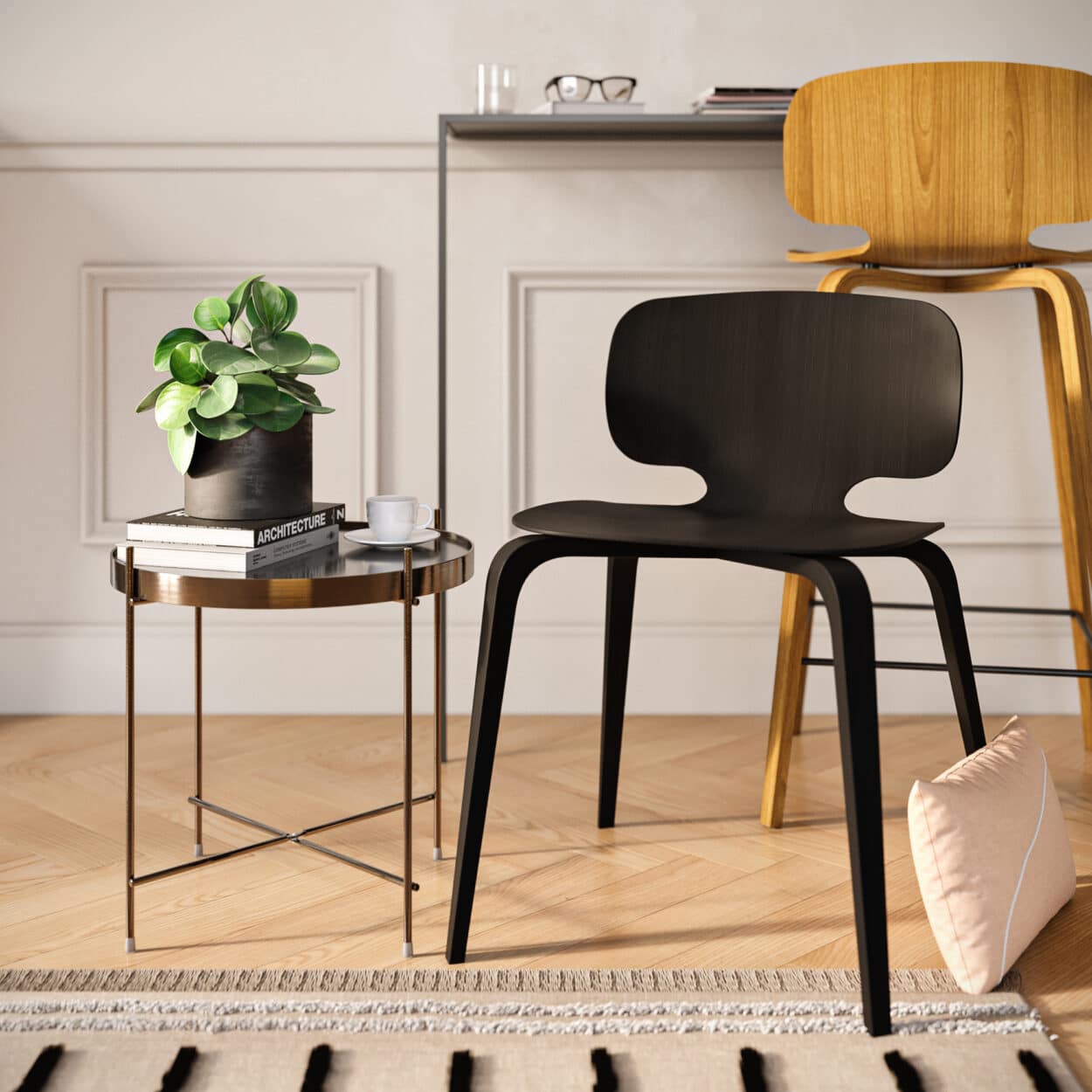
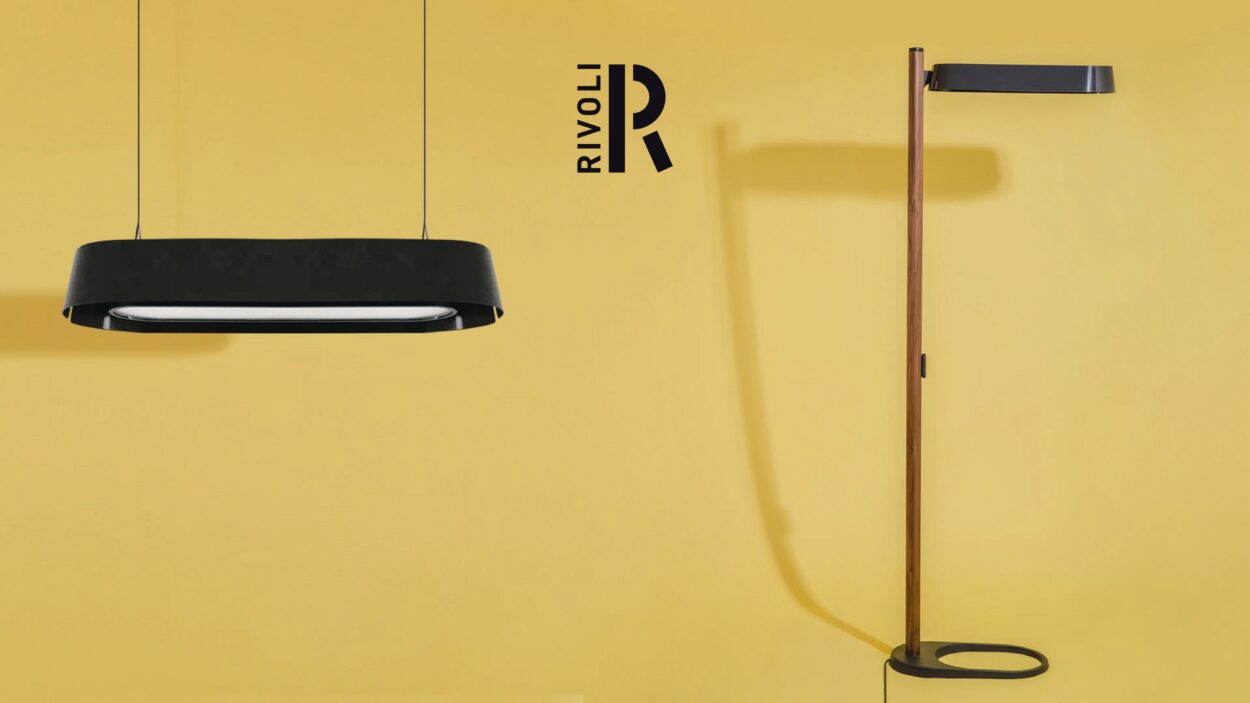
Creative Visions: The Living and Biomimicry
This island is a walk through the aesthetics of life and biomimicry, through R & D and desirable frugality. To materialize these creative visions, we will discover the very dreamlike sculpture Harmattan I by Diane de Kergal for the Gosserez Gallery and the lighting solution Woodoo LIGHTR, made with translucent augmented wood that creates effects of light.
The Harmattan I sculptural light is made of natural silk woven directly by silkworms, guided by molds-sculptures. This luminary cocoon with an organic aesthetic, fixed on a simple branch, produces a dreamlike light, by relying on the resource of the living.
Designed by Timothée Boitouzet, the LightR prototypes by Woodoo represent lighting solutions for wall cladding and partitions. The products are fabricated from a biomaterial called Woodoo SLIM, a sheet of wood made from grey sycamore and birdseye maple. This material provides properties including translucency and resistance and is a virtuous alternative to conventional materials.
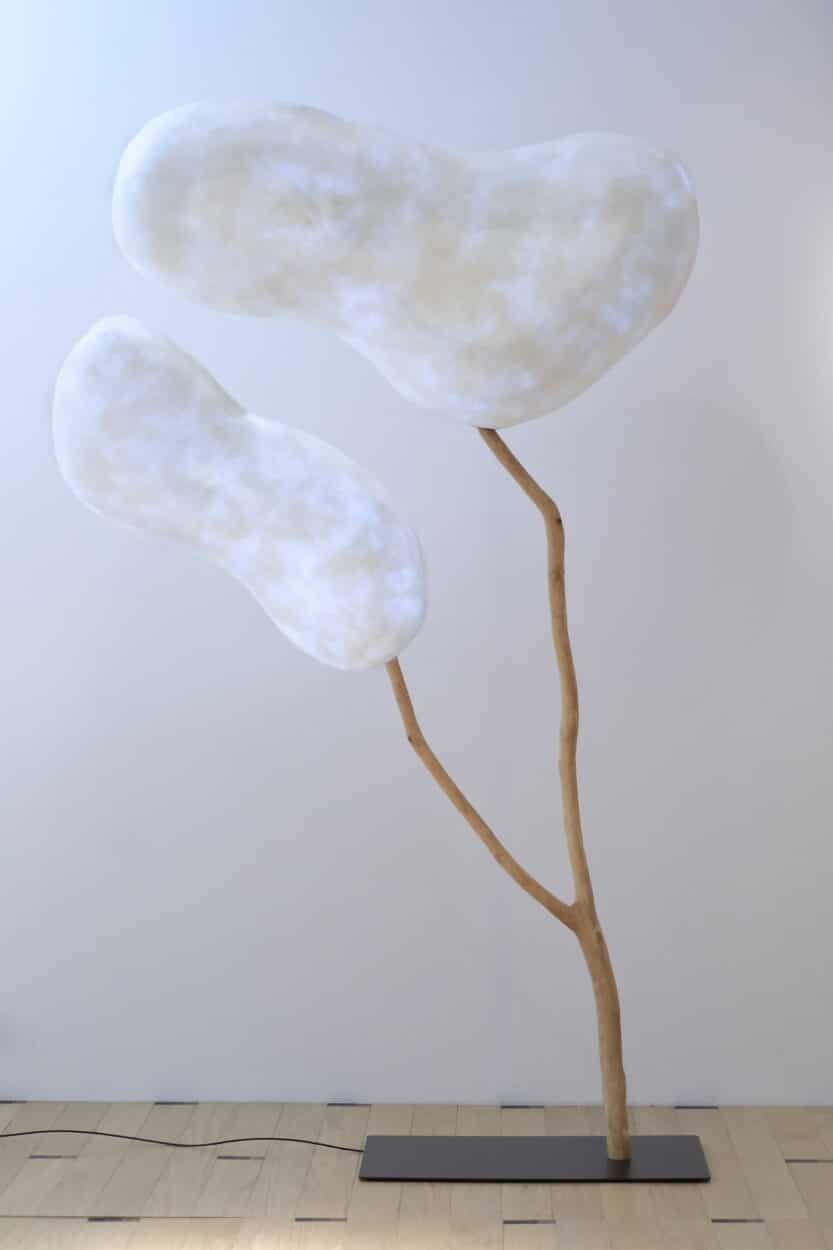
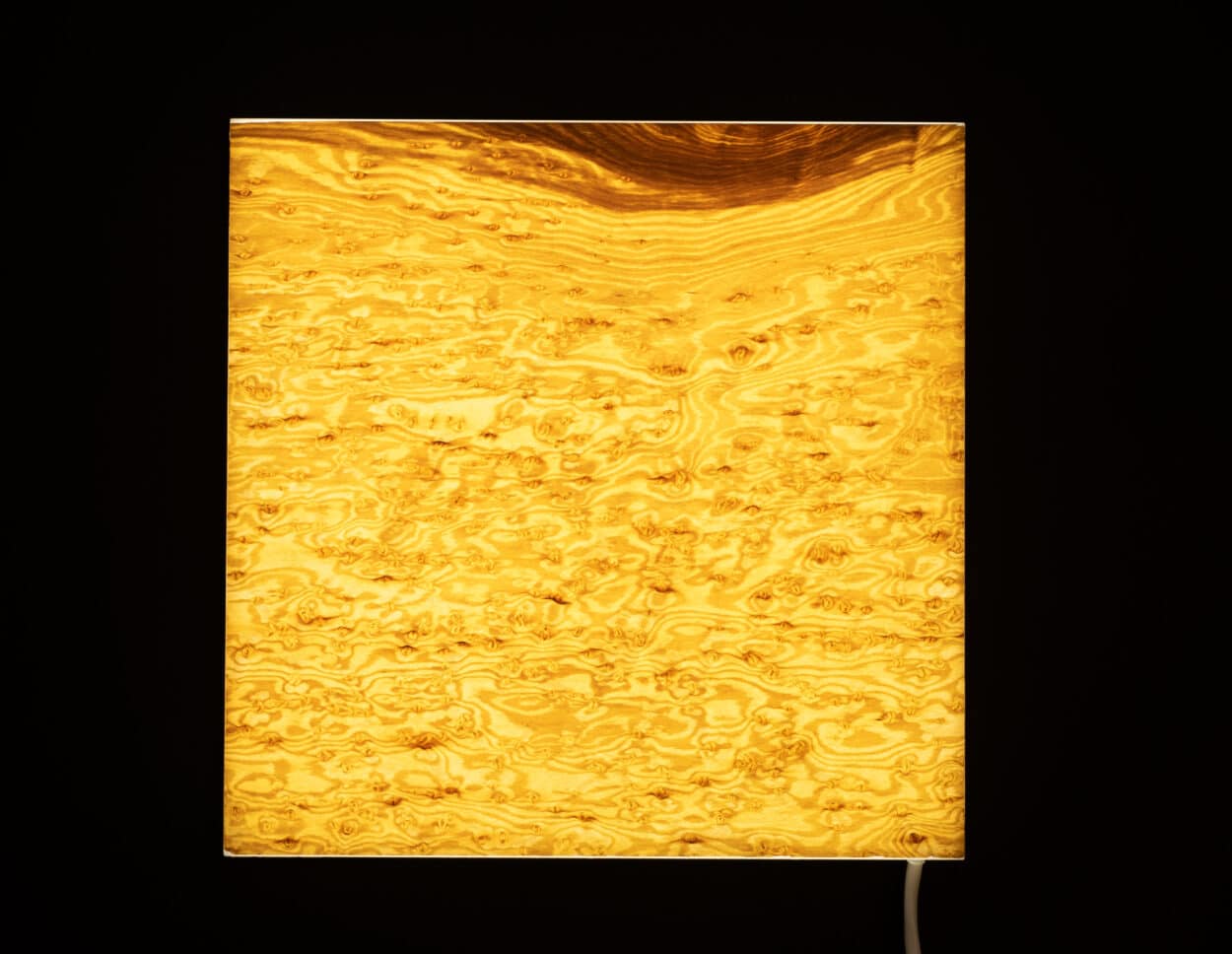
Future Uses: Forming New Relationships
This section outlines the new relationships to the object, from renting & leasing to new regenerative experiences and sources of meaning. Here, we reflect on our evolving lifestyles which are changing how we view objects, living areas and workspaces. Thanks to new concepts that make furniture transformable and modular, we are now focusing on its multiple-use value and its ability to assist us in every moment of our moment of daily life.
This part of the exhibition allows guests to discover the Climatic Table by Jean-Sébastien Lagrange & Raphaël Ménard for the gallery Valérie Guérin, equipped with a phase change material to regulate the temperature and the Oakâme furniture, made with demolition wood whose history is integrated into the material thanks to a chip readable with a smartphone.
